
🎣 Why You Absolutely Need to Know How to Put a Sinker on a Fishing Line! 🎣
If you’ve ever wondered why your bait doesn’t reach the desired depth or why it doesn’t behave naturally in the water, there’s a good chance you’re not using a sinker correctly – or even worse, not using one at all! 😱
📌 Key Reasons to Master the Art of Attaching a Sinker:
✅ Depth Control: Sinkers help your bait dive deep, targeting fish that dwell at different depths. 🌊
✅ Natural Bait Movement: With the right sinker, your bait can mimic the natural movement of prey, making it irresistible to fish! 🐠➡️🎣
✅ Stable Casting: Improve your cast distance and stability in strong currents and winds. 💨
✅ Avoid Snags: Navigate through underwater structures without getting your line caught. 🚫🌿
Don’t let your fishing game be subpar because of a small oversight. Let’s dive in and learn how to put that sinker on, so you can catch the big one next time you’re out on the water! 🚤🎣🐡👍🏼
How to Put A Weight on Line – Easy Step By Step Tutorial
How to attach weights to a fishing line? Inexperienced anglers often consider the sinker to be a secondary piece of fishing equipment. Accordingly, fishermen pay minimal attention to the choice of the sinker and the way it is attached to the line. In fact, each piece of equipment is important in its own way. After all, a well-established system, in particular, harmoniously selected and correctly attached elements will be able to provide the fisherman with good catches.
In order for the bait to reach a certain depth when fishing and stay on it, it is important to know how to tie the sinker to the line. Correct adjustment of the sensitivity of the tackle and the alignment of the float will affect the result of the catch.
Split Shot
Structurally, the rig consists of an eared weight, to the ears of which the main fishing line and a leash with a hook are attached. Artificial bait is attached to a hook, usually offset. Externally, the split shot is similar to the Carolina rig, but the latter uses a sliding weight. In the process of wiring, the weight moves along the bottom, as a result of which a cloudy trail forms behind it. This attracts fish. The leash with the bait passes in a wave-like manner at some distance from the bottom, successfully imitating underwater animals.
On the fishing line of the spinning rod, or directly on the cord, a hook with a small bait is tied, and a lead pellet is clamped 20-50 cm higher. The hook can be used as an offset or a simple single hook. This rig also allows you to spread the bait and weight. The split-shot is especially relevant when the fish is capricious and does not want to bite on the classic micro jig installations. So, often, passive perch or rudd are much more successfully caught on a spaced split shot than on a classic one. In addition, a beautiful effect is achieved with floating silicone, when the grain goes along the bottom and the bait floats higher. Of course, the play of silicone on a leash is much more realistic than in hard contact with a weight.
Rubber Core
There is nothing difficult here. First, you need to insert your fishing line into the rubber groove. Then you need to twist the rubber ears in opposite directions. This should wrap your line around the sinker core. After that, take the sinker in one hand, and the fishing line in the other and pull the weight. He shouldn’t move. If this happens, then you did something wrong and you need to redo everything.
Ring Loop and Eye
It is very important here to remove all baits, hooks, and so on from the end of the line. Then take the end of the line and thread it through the eye of the sinker. Then pull the lead upwards as needed. Make sure the weight does not slide down and see if you left the leash on the line. This is important as you will then attach the hook and bait after the sinker point.
What Is A Sinker?
Fishing sinkers are a necessary part of an angler’s equipment because provide casting of tackle, reliable immersion, and retention of bait. Products are supplied with openings for fixing on the line. The fixtures are cast from lead in various shapes and sizes. The characteristics are influenced by weather conditions, fishing method, type of tackle and reservoir, etc.
What Is The Purpose Of Using A Sinker On A Fishing Line?
Sinkers serve several important functions. First, they allow the fisherman to cast the rod any distance you want. Secondly, thanks to sinkers, you can keep your rod at the level you need. You will also be able to reach the set depth with a baited hook. In addition, with the help of sinkers, you can troll, drift.
The Main Types of Sinkers Used In Fishing
There are many different types of fishing sinkers on the market depending on the fishing method, weather conditions, and target fish. Their most important function is to keep the bait at the bottom. Fishing sinkers are mainly used when fishing close to the bottom. In the following, I describe the most important types of fishing sinkers and explain their function.
Pear-Shaped Sinker
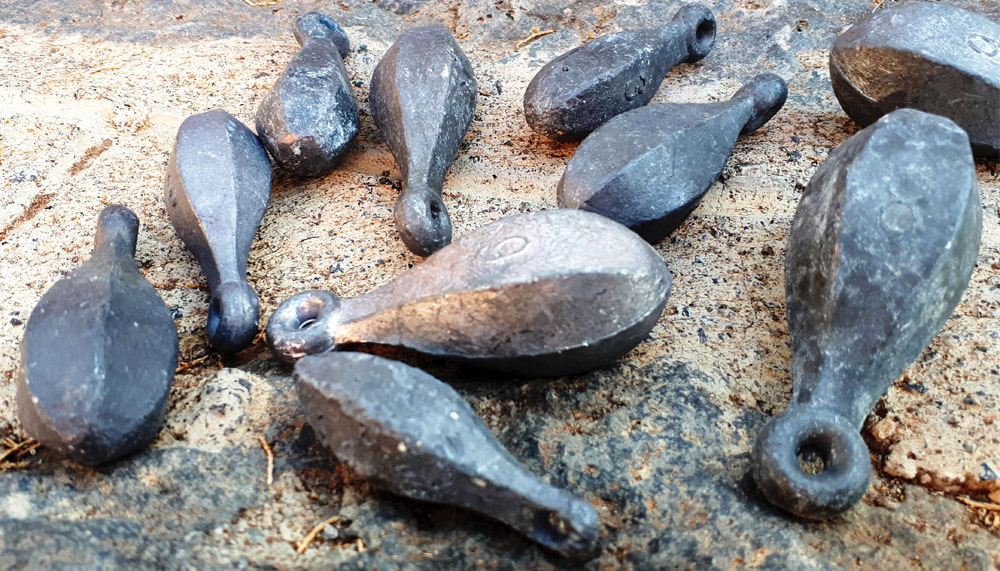
Pear-shaped sinkers are some of the most common and basic sinkers. Their shape is thick and round at the bottom, the circumference decreases significantly towards the tip. Thanks to this geometry, the pear-shaped sinker does not sink into the ground, but always points upwards. This sinker is suitable for both predatory and non-predatory fish and is used in many weight classes for various fishing assemblies. This sinker can be tied down with no problem – Palomar Knot.
Surf Sinkers

The surf sinkers have a slim, elongated body and are optimized for catching saltwater fish in the surf. The eye for the linear guide is usually on the extension. On the outside of the surf-sinkers are attached thin metal rods in the form of claws. Due to its shape, this kind of sinker can be thrown far away, and metal rods are fixed in sandy soil and hold the bait in the right place. I recommend the Trilene Knot.
Bullet Sinker
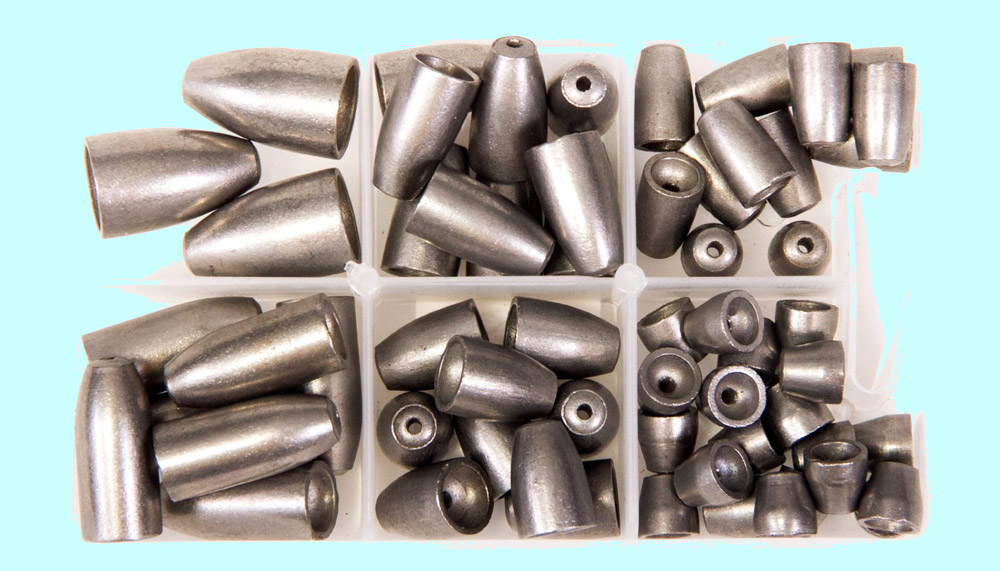
The bullet sinker is the rig most commonly used in predator hunting. Its main features include a unique shape. The collapsible bullet sinker resembles a real bullet in shape, has good maneuverability and high flight characteristics. The rig is of interest to the predator, as it looks like a fish head. I suggest San Giego Knot.
Bell Sinker
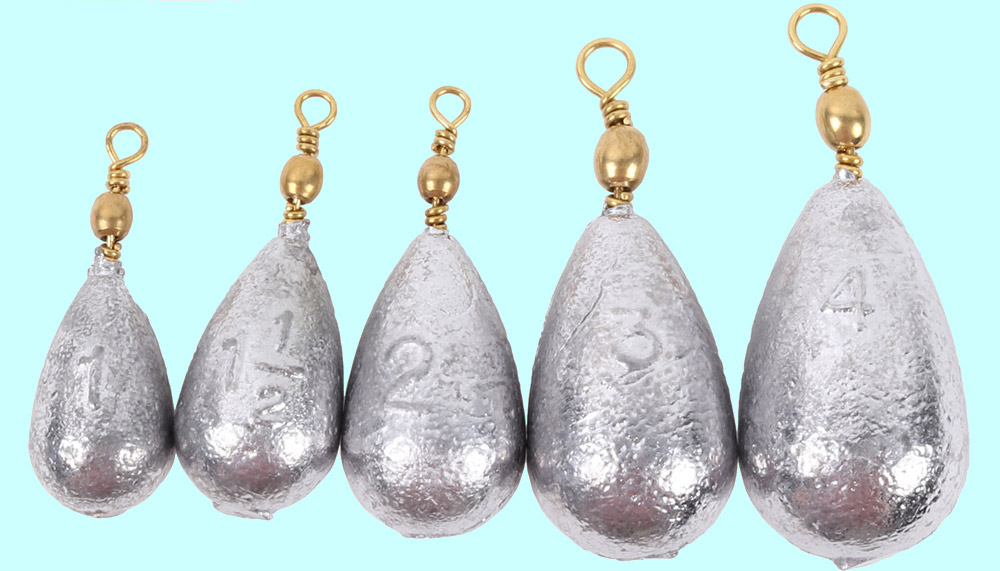
These are high-quality sinkers that are specially designed for large ponds. Due to the shape of the body, the sinker flies very far. Due to the powerful eye and swivel, you can make the most powerful casts over long distances. The shape of the body acts as an additional stimulator for biting; when it falls to the bottom, the sinker creates a cloudy cloud that attracts fish. One option is the Grinner Knot.
Olive Sinker

Olive-shaped sinkers have a through-the-hole and are sliding. Such sinkers are used mainly for fishing in the current or at great depths. Olive sinkers provide longer casting. Also, in combination with an olive sinker, a supplementary feed is used – small pellets below the main sinker. Fasten the sinker between the two knots – Figure Eight Knot.
Sinker Drop-Shot Rig
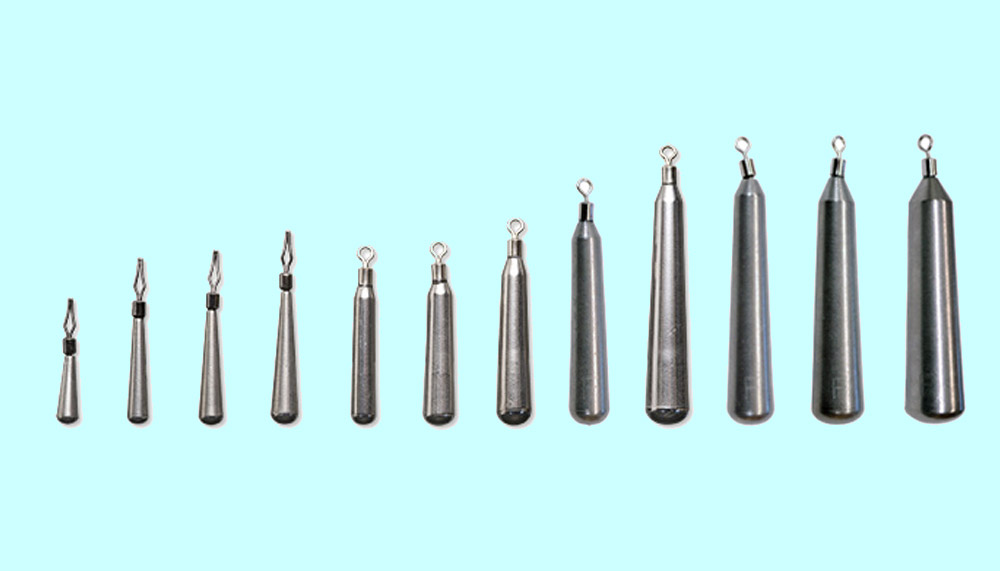
It is a slotted round lead sinker. The pellets come in a variety of weights and are usually sold in a set of pellets of different weights. In float rigs, you can use one or several pellets. The chips on the line are fixed rigidly and it is not recommended to move them, as this may damage the line. The Improved Clinch or Fixed Loop Assembly Knot is a secure attachment.
Deaf Fishing Sinkers
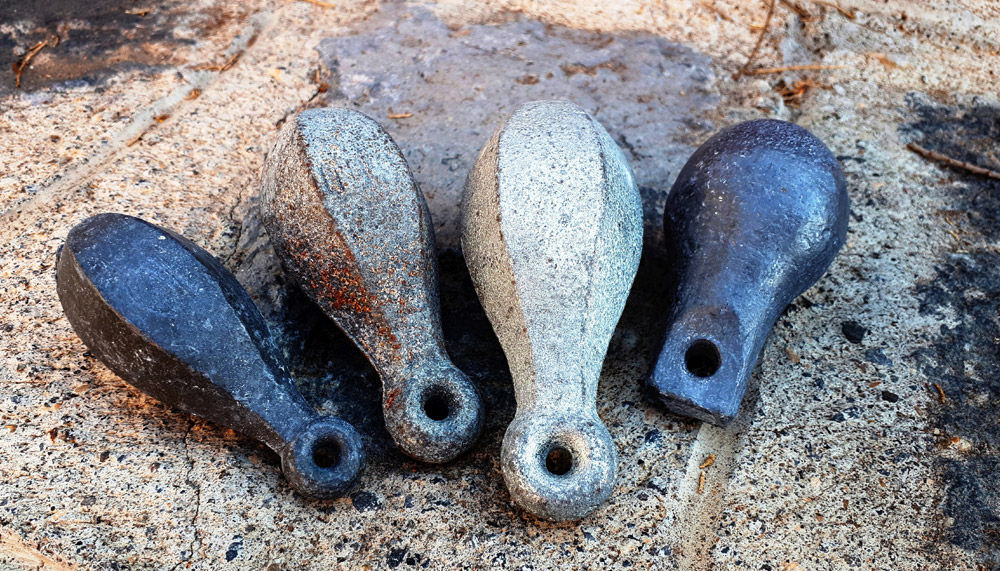
Blind weights for bottom fishing are attached to the end of the mainline, and leashes with hooks are placed higher. Rigging with deaf sinkers is designed so that the fish can be spotted completely independently under the weight of the sinker, therefore, the weight of such sinkers should not be small. Of the disadvantages of such sinkers, it is worth noting the poor visibility of the bite. Лучший рыболовный узел для приманок и утяжелителей – Rapala Knot.
Sliding Sinkers
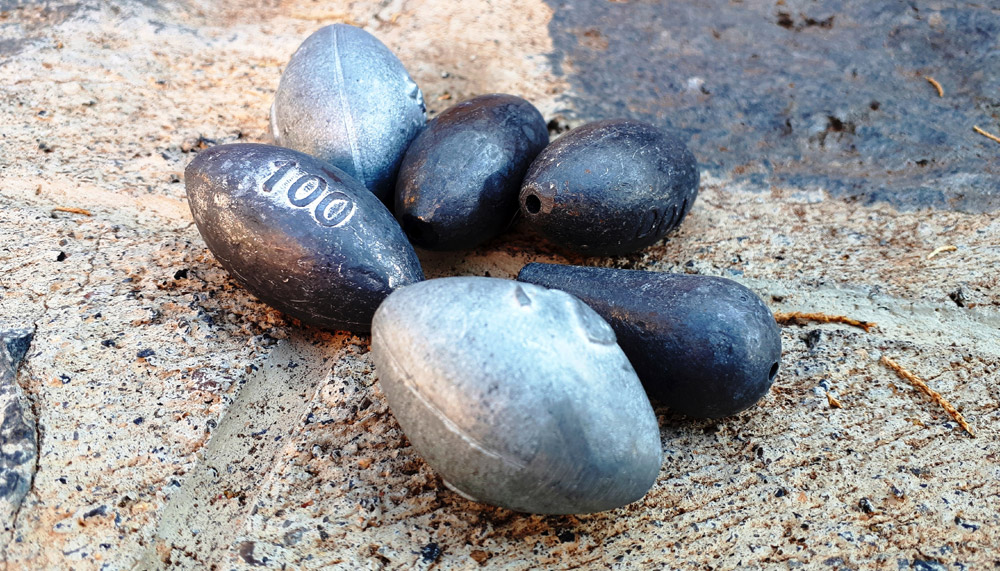
The bait dangles freely at the bottom, grabbing the bait, the fish picks up all the tackle, while the fisherman sees the bite well, and when the fish makes a strong jerk, the sinker reaches the stopper, and self-cutting occurs. The sliding lead has a full-length through-hole through which the main lead passes. Sliding bottom sinkers can have different designs, that is, there are sliding sinkers with a through the hole, and sinkers attached to the tackle through a ring. Any two knots that do not move along the line.
Swivel Sinkers
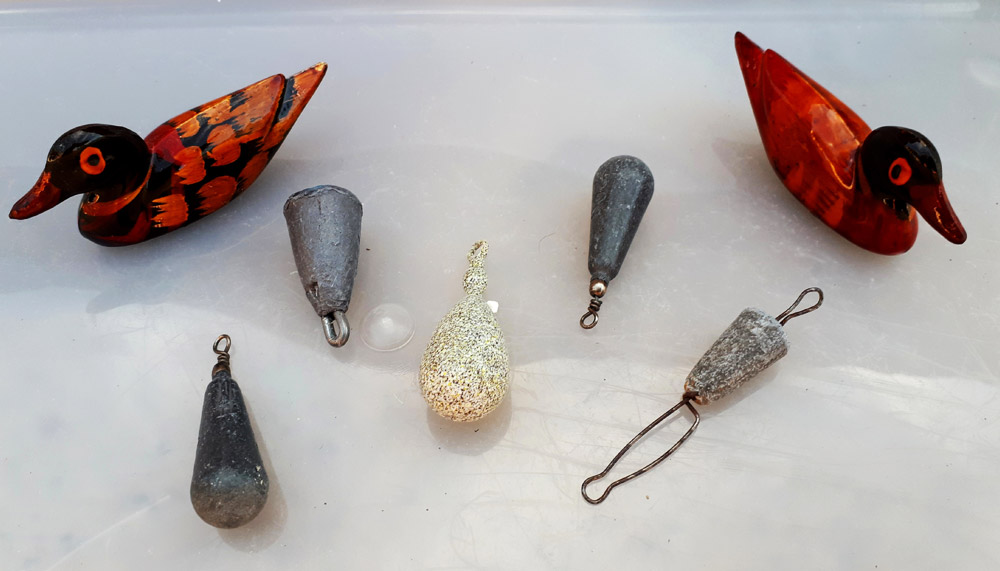
From the name, it is clear that the swivel in such sinkers is needed so that the rig does not twist when it falls to the bottom. The built-in swivel allows the sinker to rotate freely. Study and try – Uni Knot.
How Do You Put The Weight On A Fishing Line?
During fishing, the river flow and weather conditions change periodically. Fishing at different depths requires a specific sinker type and weight. There are 3 popular mounts for attaching a sinker to the line:
Deaf
A groove is made in the pellet with a knife. Then the fishing line is inserted there and squeezed with pliers to fix the sinker without the possibility of movement. If the sinker needs to be removed, the cord will have to be cut.
Sliding
A hole for the fishing thread is pierced in the pellet, after which a slight crimp is made. This will allow the sinker to move easily along the line without frightening the fish. This method is useful for deep-sea fishing, as well as for fast flow.
Removable
The advantage of this attachment is an easy and quick change of sinker. Often this process takes place together with the change of the nozzle and float. The sinker is wire-mounted. Then the nylon thread is pushed into the edges of the wire, receiving a removable stalk-shaped mount.
How Far Should The Weight Be From The Hook?
Every angler should be well versed in how far from the hook to hang the sinker about the fishing conditions. The final result of fishing often depends on this factor. The correct distribution of the sinker on the line will prevent the rig from getting tangled when casting and will allow the fish to feed naturally.
The tackle, as a rule, is loaded with classic shot weights of different weights. A small support weight is usually installed near the hook, which does not alert the fish, and the main part of the load is concentrated at some distance from it. The spacing of the line between the hook and the seam is called the leash and is usually thinner than the main monofilament. The distance from the hook to the lead is directly dependent on factors such as wind strength, current strength, and season, as well as the depth of the fishing site. And, of course, the type of fish you want to catch.
If fishing in a pond with the current or you have to fish in a strong wind, then this distance should be at least 20 cm. If this condition is not met, the hook will constantly cling to the bottom debris, while the float will immediately sink. Such fishing cannot be effective, since the angler will not be able to make high-quality wiring of the rig.

The length of the gap between the hook and the support weight may vary depending on the season. During the spring and summer months, when the water warms up well, fish can feed in the upper layers of the water. In this case, it is better to use leashes with a length of 20 to 30 cm. The bait on a long leash will slowly sink in the water column, which is as close as possible to the behaviour of natural food. The fish without fear grabs the bait that behaves in a natural way. If, however, attach the load-feeding at a distance of 5–10 cm, then the bait carried away by it will quickly sink into the bottom layer and will be left unattended by the fish.
In autumn and winter, on the other hand, the leash length should be rather short, since fish in cold water prefer to feed on the bottom. A hook on a long leash will sink to the bottom for a long time, which will significantly reduce the rate of fishing. In addition, while the bait falls to the bottom, the rig will already swim through the lured point and the likelihood of a bite will decrease.
When fishing with a fly rod, it is very important to maintain the correct distance between the leads and the hook. The casting distance of the rig and the uniformity of its flight depend on the correct distribution of weights. The sinkers in this rig are divided into 3 groups: the main one, which is concentrated in the body of the float itself. Additional clause, which is located between the float and the load-bearing. A support load is located near the hook.
Due to the fact that the bulk of the sinkers is in the body of the bite alarm itself, the casting range is significantly increased. When casting, the heavy float flies in front and the rest of the rig follows. Before splashdown of the signaling device, the angler slows down the descent of the line, and all the equipment lies flat on the water. The distance between the weight-support and the adventitious part of the rump is usually 70–100 cm, which makes it possible not to alert the fish during fishing.
How To Properly Distribute Weights On The Line?
For successful fishing, it is important not only to know how to tie a weight to the line but also to be able to choose a reliable line. Good weight distribution and knowledge of breaking load will reduce line breaks when fishing or casting.
How To Remove Weight From The Line?
It takes a lot of effort to extract the weight without damaging the line. Many weights are removed when the adjustment algorithm is performed in reverse order. The weight is removed in the reverse order. The goal is to loosen, untie the knot, which is not easy to do, for example, without a needle or the same fish hook. The fact is that a tightly tightened knot is quickly untied only with a sharp point. Do not use a knife, a medical scalpel, a lancet for taking blood from a finger, and other instruments sharpened on one side along the entire length. They will cut the line, which, when repeating this method, can lead to a gradual decrease in its total length.
If you remember what kind of knot the weight was tightened with, then, having an awl or a sewing needle in your hand, having knotted the other way around, easily and quickly release the sinker. It is changed when fishing conditions change:
- The heights of the location of the fisherman relative to the surface of the reservoir.
- Sudden changes in weather conditions and seasons.
- Reorientation to specific fish species.
- Changing the fishing rod to a spinning rod, feeder, or other catching devices.
After loosening the attachment of the old weight, it is necessary to put on the other tackle, which is necessary for the changed conditions. It is wise to use several ready-made gears with different weights and hooks.
But this method is not suitable for some species. There are many specialty devices on sale that simplify this task.
What Devices Are Used To Remove Weights From The Line?
Many fishing accessory companies manufacture special tools for safely removing weights from the line. Outwardly, these devices look like forceps with a special metal tooth on the sash. When the device presses on the sinker slot, the groove expands and the line is pushed out.
Conclusion
It’s hard to imagine a fishing tackle without a sinker. Only some tackle for surface fishing, fly fishing, for flies or insects, can do without the presence of sinkers. In most fishing tackle, from a float rod to a spinning rod, from a feeder to a winter rod, many types of different weights are used everywhere. The sinker allows for long-distance casting of the tackle and holds the rig at the bottom, in the fish feeding area. I hope that in my article you have found the answer to your question about how to put weight on the fishing line?
Tags: #how to put a weight on a fishing line / #how to attach weights to a fishing line / #how do you put the weight on a fishing line / #how far should the weight be from the hook / #how do you put a sinker on a fishing line / #how do you put a split shot weight on a fishing line / #how to put weight on fishing line

I live in Tenerife (Canary Islands) for the last 10+ years and share my daily fishing experiences on my website. Many years of personal experience as a fisherman and the vast experience of my friends allow me to write professionally on any fishing topics (from choosing a flashlight and equipment to deep-sea fishing).
All of my advice is based on practical real-world experience and will be useful to both novice anglers and professionals. Read more about the author.
Affiliate Disclosure: FishReeler.org sometimes gets paid for listings, through sponsors or affiliate programs like Amazon, Ebay, Cabelas, Bass Pro Shop, Shimano, Daiwa, Rapala, Renn, Okuma, KastKing, etс. Clicking a link helps keep FishReeler.org free, at no extra cost to you!
About the author: Each article is verified by the fishing expert Sergio Smirnoff. The articles are written by professional and amateur fishermen with 20+ years of fishing experience.
Note: The views and opinions expressed in this article are those of the authors and do not necessarily reflect the official policy or position of any agency. The articles are for informational purposes only, share your opinions in the comments and join the fishing discussions, let's share our fishing experiences together!

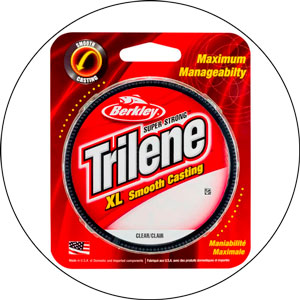
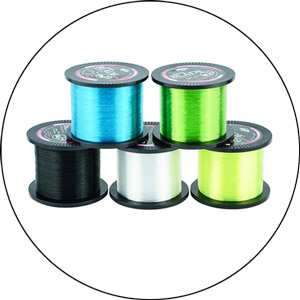
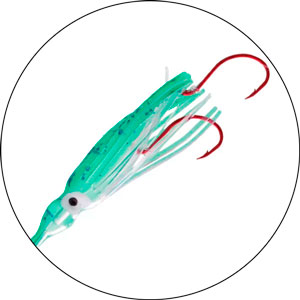
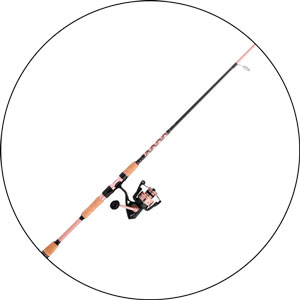
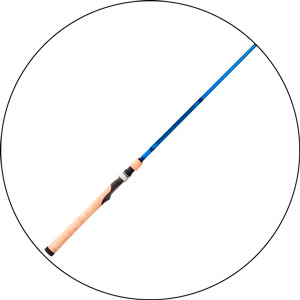
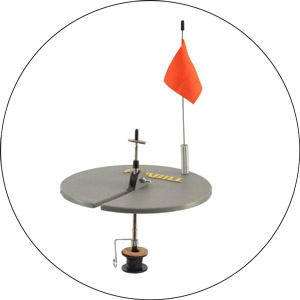
Great tutorial on how to rig a fishing line! As someone who’s been fishing for years, I can definitely say that this guide covers all the necessary steps to ensure a successful fishing experience.
I especially appreciate the detailed instructions on how to attach the split shot sinker to the fishing line. It’s important to position it correctly and make sure it’s tightly secured to avoid losing it while casting. The rubber core is also a great addition to increase sensitivity and improve the chances of catching a fish.
The explanation of how to attach the ring loop and the eye is also helpful. It’s crucial to make sure the loop is large enough for the sinker to be inserted and pulled up to the eye. And of course, removing any hooks, lures, or bait before rigging the line is a must.
This is a comprehensive guide that covers all the necessary steps to rig a fishing line properly. I’m excited to put these tips into practice and see how they improve my fishing game. Thanks for sharing!
I can definitely help with that! Attaching a weight to a fishing line can be done in a few different ways depending on the type of weight you have and the type of fishing you plan on doing.
One option is to attach the weight to the mainline through a ring or a special screw. However, this can make the fishing line stiff and more susceptible to damage. Additionally, if you pull too hard on the line, the weight may fall off the line and scare away any potential fish.
Another option is to attach the weight directly to the mainline. This method is better for the fishing line as it won’t make it as stiff. A groove can be made in the weight with a knife, and then the weight can be inserted into a U-shaped groove on the line. The line is then cut, and the weight is secured in place.
A sliding sinker is another option for fishing in a current. The weight is inserted through a hole in the pellet, and then a small crimp is made to allow the line to flow easily through the sinker. This type of weight is especially useful for fishing in fast-flowing water.
Lastly, there is the option of a removable weight. This type of weight is made of nylon and is fitted with a wire. The weight can be changed by lifting it out of the nozzle and replacing it with a different one. This type of weight is perfect for those who like to change up their fishing techniques often.
Attaching a weight to a fishing line is a simple process that can be done in a few different ways. It’s important to choose the right type of weight for the type of fishing you plan on doing and to handle the fishing line with care to prevent damage.
I’ve been fishing for a long time and I can say that fishing weights are not always necessary. In fact, I have caught many fish without using any weights on my fishing line. The key is to tie the fishing line properly on the fishing rod and make sure that the bait looks like a natural occurrence in the water.
However, there are times when using a fishing weight can be helpful, especially when you want to keep your bait down and prevent it from floating in the water. But it’s not always necessary. Personally, I prefer to see the bait moving smoothly and naturally, without any added weight. It just makes the whole fishing experience more enjoyable and satisfying.
So, in my opinion, it’s good to have a fishing weight on hand, but it’s not something you absolutely need. It all depends on the type of fishing you’re doing and your personal preference. Ultimately, the goal is to catch fish and have fun doing it!
When it comes to attaching split-shot sinkers, it’s important to find the right balance between pinching them too tight and having them too loose on your line. Personally, I recommend getting split-shot with ears on the back that can be easily removed from your line.
If you’re having trouble with your line breaking at the pinch point, try pinching the split shot a little less tightly next time. Split-shot sinkers are great for trout fishing, and if you’re interested in learning more about that, I suggest checking out this article.
I’m excited to share my knowledge on how to attach egg sinkers. These sinkers are named after their egg shape and have a hole through the center like a bead. To attach an egg sinker, slide it onto your line and tie a swivel onto the end to prevent it from sliding off. On the other end of the swivel, add about 18 inches of line then your hook.
It’s important to keep in mind that the 18 inches of line between your swivel and hook is called the leader. The purpose of the leader is to keep your hook away from your sinker to avoid scaring off the fish.
Egg sinkers are designed to slide up and down your line, which makes them perfect for a sliding sinker rig. This allows your line to slide through the sinker, which increases your ability to detect when a fish bites your hook.
If you’re targeting catfish or carp, the sliding sinker rig is a popular choice. Give it a try next time you’re out on the water!
If you’re a bass fishing enthusiast like me, then you’re probably familiar with bullet sinkers. These sinkers are designed with a hole in them which allows them to slide up and down your line. To attach a bullet sinker, simply slide it onto your line-pointed end first. Then, tie on your hook and soft plastic bait to keep it on.
Now, I know I just mentioned that you want to keep your weight away from your hook, but bass fishing is an exception. When you’re using bigger lures and soft plastics, bullet sinkers can blend into the bait and just look like the head of a worm or creature bait. Bass is aggressive and usually strikes without too much investigation, making this setup effective.
So, the next time you’re out bass fishing with soft plastics, consider using a bullet sinker for a more natural and effective presentation.
Have you ever used a bell sinker? It’s a versatile sinker that can be used similarly to an egg sinker. The main difference is that instead of sliding the line through a hole, the bell sinker has a wire loop sticking out of it.
To attach a bell sinker, you have a couple of options depending on whether you want it to slide up and down your line or not. If you don’t want it to slide, you can attach it with a snap swivel. On the other hand, if you want it to slide, just thread your line through the wire loop and tie a swivel to the end.
Sometimes the wire loop is big enough to slide over the swivel, which can be prevented by adding a bead between the swivel and your sinker.
Overall, the bell sinker is a great addition to your fishing tackle box and provides another option for your rigging needs.
Thanks for sharing this information about bank sinkers. I have never used them before, but it’s good to know how to attach them properly.
It’s interesting that the loop is formed into the shape of the sinker. This seems like it would make it easier to attach, but you mentioned that it can be rough on your line when casting.
Using a snap swivel is a great alternative to threading the line through the loop, especially if you’re using a strong line like 15-20 pound mono. I appreciate the tip about needing a larger snap to fit around all that lead.
The option of using a loop below your hook also sounds like a convenient way to change the weight without re-tying knots. I’ll have to give this a try sometime.
Overall, this was a helpful guide on how to attach bank sinkers. Thanks for sharing!
Thanks for sharing your tips on how to attach hollow-core lead wire! I’ve never tried using it before, but it sounds like a versatile and effective option for drift fishing in rivers.
Breaking off the length that you need from the roll seems like a convenient way to use this type of lead wire. I appreciate the warning about not pinching the tube closed when bending it back and forth to break it off.
It’s also good to know that pinching the line with hollow core sinkers could potentially damage it. I’ll keep that in mind if I ever decide to give them a try.
Overall, I found your article helpful and informative. Thanks again for sharing your knowledge and tips for beginner anglers like myself!
When it comes to where to put sinkers on fishing lines, there are a variety of factors to consider. As a beginner angler, it can be overwhelming with the sheer number of sinker options out there.
The most common types of sinkers used in fishing are the split shot, rubber core, sliding, and tied sinkers. Each of these has a specific purpose and can be used for different types of fishing styles.
It’s important to have an active fishing license before heading out to fish, and if you want to improve your rigging knowledge, be sure to read more about how to tie the best fishing knots. Remember, practice makes perfect, so get out there and turn your knowledge into action!